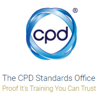
Beginner's guide to: Programming
Our digital world means there is a huge demand for programming and coding expertise. Read our guide to learn about programming, coding and the languages used for Artificial Intelligence.
20 January 2022
Programming and programs are a big part of everyday life – no, not your favourite soap opera, we’re talking about computer programming - it’s what makes lots of your digital devices do the things they’re meant to. In this introduction to programming we’ll cover:
- What is programming?
- Programming vs Coding – What’s the difference?
- Why is coding important?
- What are programming languages?
- How does Artificial Intelligence play a part in programming?
- How to start learning programming?
What is programming?
Programming is the process of writing computer programs. Computer programs (commonly referred to as software) are what makes computers work. Without any software, computers are just machines, your operating system, email, games and videos are all types of software.
What is coding?
Code is a part of programming, and is the process of writing scripts or pieces of code that the computer can read and execute. It’s part of the programming process but not the whole thing.
Is coding and programming the same?
There is a difference between the term coding and programming. Programming is the process of software development, including planning, implementation, and post testing whereas coding is the specific activity of writing code to run.

Importance of coding
Code powers our digital world. Most modern technology, such as smartphones, TVs to even some of our ovens, needs code to operate. As we rely more on technology, it’s even more important that we have coding skills to keep up. According to the UK Data Skills Gap Report 24% of businesses said that their sectors had insufficient skills in programming. This skills gap highlights the importance of coding in our society.
Recently across the education sector, there’s been more focus on introducing coding skills early in our children’s lives. The UK government have added coding to the national curriculum and Barclays run Code Playground sessions for children to learn the basics of coding.
What is a programming language?
Computers run programs and code using binary. Binary is a set of digits, called bits which are the smallest unit of data, represented as either a 0 or a 1. Within a computers processor, the circuits are made up of lots of transistors, which are tiny switches that switch on or off depending on electric signals. These digits tell the computer whether the transistors are on or off. Watch this video for a quick explanation:
Watch this video for a quick explanation:
Coding languages were created to make coding easier than giving the information directly to the computer in binary. Rather than writing code in 0’s and 1’s, programmers are able to use languages that are closer to human speech (such as if x, do y). Once this is then run, the language is converted into binary (known as compiling) to be run.
There are many different types of human coding language used today, some of the most in demand ones are:
|
Javascript |
Javascript is a programming language for the web. It can update both HTML and CSS to make web pages interactive and is an essential part of any web applications. Javascript is part of any web developer’s toolbox and it works to speed up the responsiveness of websites, even when you’re offline. |
|
Python |
Python’s functions can be carried out with simpler commands and less text than most languages. It’s used as a scripting language for web apps, automating a specific series of tasks to be more efficient. It’s also widely used for AI and for data analytics. |
|
HTML |
HTML stands for Hyper Text Markup Language. It’s the standard language for web pages. Elements, represented by <> tags, are the building blocks of HTML pages. HTML is one of the key languages in web development and is widely used. |
|
CSS |
CSS stands for Cascading Style Sheet. It’s used to describe how to display HTML elements. If HTML is the building blocks of a web page, CSS places the blocks and lets you customise how they look. This means you can change the size, colour and position of HTML elements using CSS. |
|
Java |
You’d be forgiven for thinking that Java and Javascript are related, but, other than the name, they’re quite different. Java is the most used language in the world. It’s the main language for creating Android apps and is widely used to control internet routers and IoT devices (like smart lights or sensors). |
|
Swift |
Swift is a coding language developed by Apple, it’s what the company recommends for developers writing code for Apple’s various platforms. Swift is an open source language, an evolution of the Objective-C language used by Apple. The language is locked to Apple products, but can be used to write for macOS, watchOS and iOS. |
|
C languages |
C is a general purpose, high level language which was initially created to write the UNIX operating system. Today it’s the most popular language for system programming. This means for creating operating systems and software that can run on any computer. This also includes compilers for other coding languages, text editors, network drivers and databases. It has become more widely used because it’s easy to learn, produces efficient programs and can be compiled on a variety of computer platforms. |
|
Ruby |
Ruby is another general-purpose coding language which is widely used. Its creation was influenced by several other languages. It focuses on simplicity and productivity, to help programmers create complex programs with fewer lines of code. It was made popular by the Ruby on Rails framework that includes everything you need to build great web applications. |

What is Artificial Intelligence?
Artificial Intelligence is the theory and development of computer systems able to perform tasks that normally require human intelligence, such as visual perception, speech recognition, decision making, and translation between languages.
Essentially, Artificial Intelligence (AI) happens when a machine is programmed to mimic human intelligence. Their level of AI is measured by their ability to display human behaviours like decision-making, learning, or problem-solving.
Computers are already able to mimic parts of human cognition, like information processing and memory, for example. AI is geared towards the more advanced functions, as the image below illustrates.
Which programming language is used for Artificial Intelligence?
Programming AI can be difficult in itself, so programmers will take care in choosing what language it’s written in. Depending on the use for the AI, it will need to analyse data, make predictions, work across platforms and adapt based on data. We’ve listed some of the most popular languages for AI developers:
- Python – Python is known as a user-friendly language which is what makes it a popular choice for AI programmers. As a fairly new language, there’s also still a big community meaning lots of support for programmers.
- Java – This long standing language has a wider range of compatibility across platforms, meaning you don’t need to rewrite code when changing systems.
- Lisp – The oldest programming language for AI development, developed back in the 1960s. Lisp makes it easy to solve problems and writing code that can modify itself, which is great for machine learning AI.
- R – Analysing and representing large amounts of data is key with AI. It works especially well in processing data and helping with predictions and pattern changes.

How to learn programming and coding
Coding and programming can help to develop problem-solving skills. It helps your ability to break down problems in to smaller, more manageable tasks and because of this, can make it easier to find a solution.
Programming and coding is still a very sought after skill in today’s climate, and the government estimates this is only going to increase.
We use programs and code in nearly all aspects of our lives and learning how to program can sometimes be overwhelming. To find out more, see our Introduction to coding module, or visit Barclays Code Playground for more information on how to get your child coding from an early age.
For more information, Build your digital skill set course. |
To help get started with coding, see our Code Playground website. |

